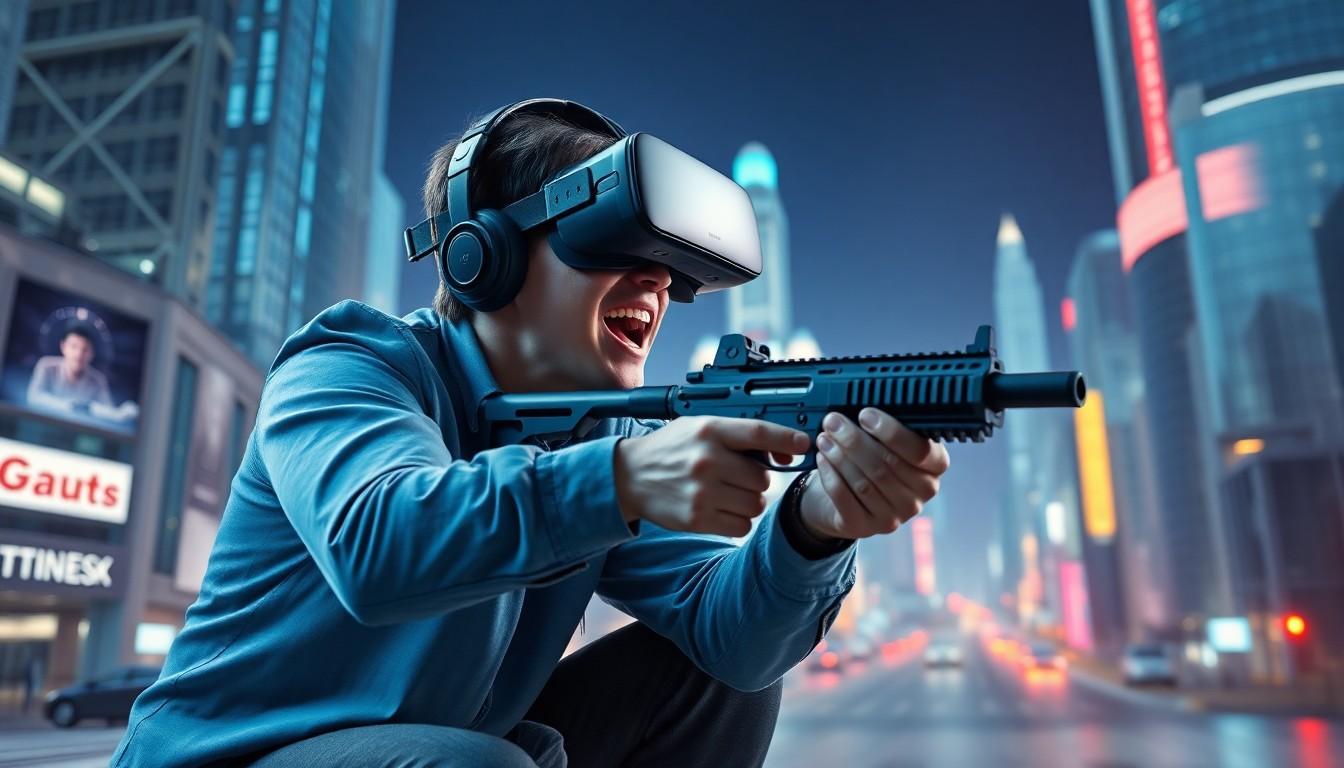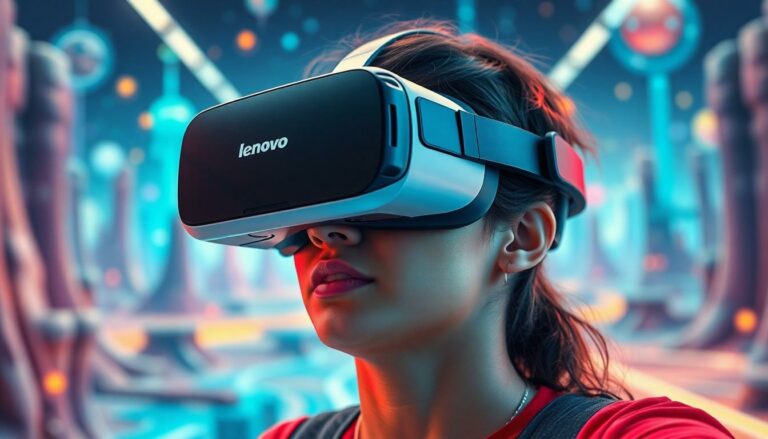Table of Contents
ToggleVirtual reality shooting games have taken the gaming world by storm, turning living rooms into epic battlefields. Imagine dodging bullets while your heart races and your palms sweat—all without leaving your couch. It’s like being in an action movie, minus the popcorn and the risk of actually getting shot at.
Overview of VR Shooting Games
VR shooting games provide a unique gaming experience that envelops players in virtual worlds. Players engage in realistic scenarios that replicate the feel of being in an action movie. Game developers utilize advanced graphics and sound effects to enhance immersion, creating intense atmospheres that captivate users.
Various types of VR shooting games exist, including arcade shooters, tactical shooters, and survival games. Arcade shooters prioritize fast-paced action, while tactical shooters focus on strategy and teamwork. Survival games challenge players to endure against waves of enemies, emphasizing resource management and skill.
Equipment plays a crucial role in optimizing the VR shooting experience. Motion controllers enable precise aiming and shooting, while VR headsets immerse players in a 360-degree environment. Popular platforms like Oculus Rift, HTC Vive, and PlayStation VR support a range of titles, giving players diverse options.
Players often experience physical engagement in VR shooting games, moving around their spaces as they dodge bullets and aim at targets. Multiplayer modes introduce competitive elements, allowing players to test their skills against others globally. Community interactions enrich the gaming experience, fostering friendships and rivalries.
Success in these games hinges on reflexes and strategic planning. Players must develop quick decision-making skills to navigate challenges and adapt to evolving gameplay. VR shooting games are not just entertainment; they encourage teamwork, cooperation, and social interaction.
Statistics indicate a growing audience for VR games, with the market projected to reach $12.1 billion by 2024. As technology advances, VR shooting games will likely become even more realistic, drawing in more players and enhancing the overall gaming experience.
Key Features of VR Shooting Games

VR shooting games provide an engaging and immersive experience that draws players into the action. Various key features enhance gameplay and create a unique virtual environment.
Immersive Gameplay Experience
Players engage fully in VR shooting games, interacting with their surroundings as if they were part of the action. Motion tracking technology accurately captures movements, allowing for natural shooting stances and actions. This sense of presence elevates the experience, as players duck, dodge, and aim in a realistic setting. Multiplayer modes further enrich gameplay by fostering collaboration or competition with other players. Engaging scenarios keep players invested, and the potential for varied strategies enhances replayability, ensuring each session feels fresh and exciting.
Realistic Graphics and Sound
Realistic graphics in VR shooting games contribute significantly to immersion. High-quality textures and detailed environments create lifelike scenes, making players feel as though they truly inhabit another world. Sound design plays a crucial role, with 3D audio that captures the direction of gunfire or footsteps. This auditory feedback helps players stay alert to their surroundings, enhancing situational awareness. Together, exceptional visuals and spatial audio create a believable reality that intensifies the gaming experience, drawing players deeper into the action with each movement.
Popular VR Shooting Games
Several VR shooting games attract players with immersive gameplay and engaging features. Each title offers a unique experience, enhancing the overall gaming adventure.
Game 1: Overview and Features
Half-Life: Alyx stands out in the VR landscape. Set in the Half-Life universe, it combines storytelling with intuitive gameplay mechanics. Players navigate a richly detailed environment, solving puzzles and battling headcrabs and Combine soldiers. Motion tracking enhances interactivity, allowing for natural combat engagements. The use of environmental objects as weapons adds depth to combat strategies. Realistic physics make the experience more engaging, ensuring that every encounter feels intense.
Game 2: Overview and Features
Boneworks also deserves recognition for its innovative approach. Emphasizing physics-driven combat, it challenges players to utilize their surroundings effectively. Players can manipulate objects, creating unique solutions for various combat scenarios. The game supports a range of VR devices, making it accessible to a broad audience. With a combination of survival mechanics and tactical shooting, it keeps engagements dynamic and unpredictable. Enhanced motion controls ensure a responsive gameplay experience, immersing players deeply in its virtual world.
Advantages of VR Shooting Games
Engagement sets VR shooting games apart from traditional gaming. Players experience total immersion, feeling as though they’re part of the action. Physical interaction enhances the experience, as body movements directly translate into gameplay.
Realism stands out due to advanced graphics and sound design. High-quality visuals create lifelike environments, while 3D audio further heightens the sense of presence. Motion tracking technology allows for fluid movements, giving players the freedom to dodge or crouch naturally.
Social interaction flourishes in multiplayer modes. Gamers collaborate or compete with friends, fostering a strong sense of community. In-person connections translate into virtual environments, enriching the overall gameplay experience.
Physical fitness benefits players by encouraging movement. Dodging, aiming, and maneuvering provide a workout that benefits both mind and body. Unlike sedentary gaming, VR shooting games promote a healthier lifestyle.
Strategic planning becomes essential in gameplay. Quick reflexes and tactical decisions can determine victory or defeat. Players develop critical thinking skills while engaging in fast-paced scenarios.
Accessibility of various platforms such as Oculus Rift and HTC Vive enables wide reach. VR shooting games welcome diverse players, from casual gamers to hardcore enthusiasts. This growth reflects in the market, projected to reach $12.1 billion by 2024.
Overall, VR shooting games transform the gaming experience, blending entertainment and physical activity. These advantages invite more players into immersive worlds, fostering excitement and engagement.
Challenges and Limitations
Several challenges and limitations exist within the realm of VR shooting games. The high cost of equipment poses a significant barrier for potential players. Quality VR headsets and motion controllers can range from $300 to $1,000, making entry-level options less accessible to a broader audience. Moreover, limited game availability on different platforms restricts player options, creating a divide between various VR ecosystems.
Physical space constraints present additional challenges. Players require adequate room to move freely, which isn’t always available in smaller living environments. Additionally, the risk of motion sickness affects some users, rendering the immersive experience less enjoyable. Symptoms can include dizziness and nausea, impacting gameplay and discouraging potential participants.
Multiplayer connectivity issues further complicate the experience. Lag and connection drops can disrupt gameplay, causing frustration among players. Online matchmaking may not always provide balanced competition, resulting in uneven experiences. These factors can deter players from continually engaging with titles.
Another limitation resides in the technological capabilities of existing VR systems. Current hardware may struggle to deliver the highest quality graphics and performance consistently. Older systems typically exhibit reduced frame rates and less realistic sound design, which detracts from immersion. Creating a seamless experience across various devices remains an ongoing challenge.
Finally, content fatigue can occur as players exhaust game options. Without consistent updates or new releases, interest in certain games may wane, leading to decreased player engagement. Developers face the challenge of keeping content fresh to maintain player interest and prevent stagnation. As the VR shooting game market continues to evolve, addressing these challenges will be vital for sustained growth and player satisfaction.
VR shooting games are revolutionizing the gaming landscape by offering unparalleled immersion and excitement. As technology advances and the market continues to grow, players can expect even more realistic experiences that blend physical engagement with strategic gameplay. The unique features of VR shooting games not only enhance entertainment but also foster community and social interactions among gamers.
While challenges like equipment costs and technical limitations exist, the potential for innovation remains vast. Developers must focus on creating fresh content to keep players engaged and invested in their virtual adventures. As the VR shooting game genre evolves, it promises to deliver thrilling experiences that captivate audiences for years to come.






